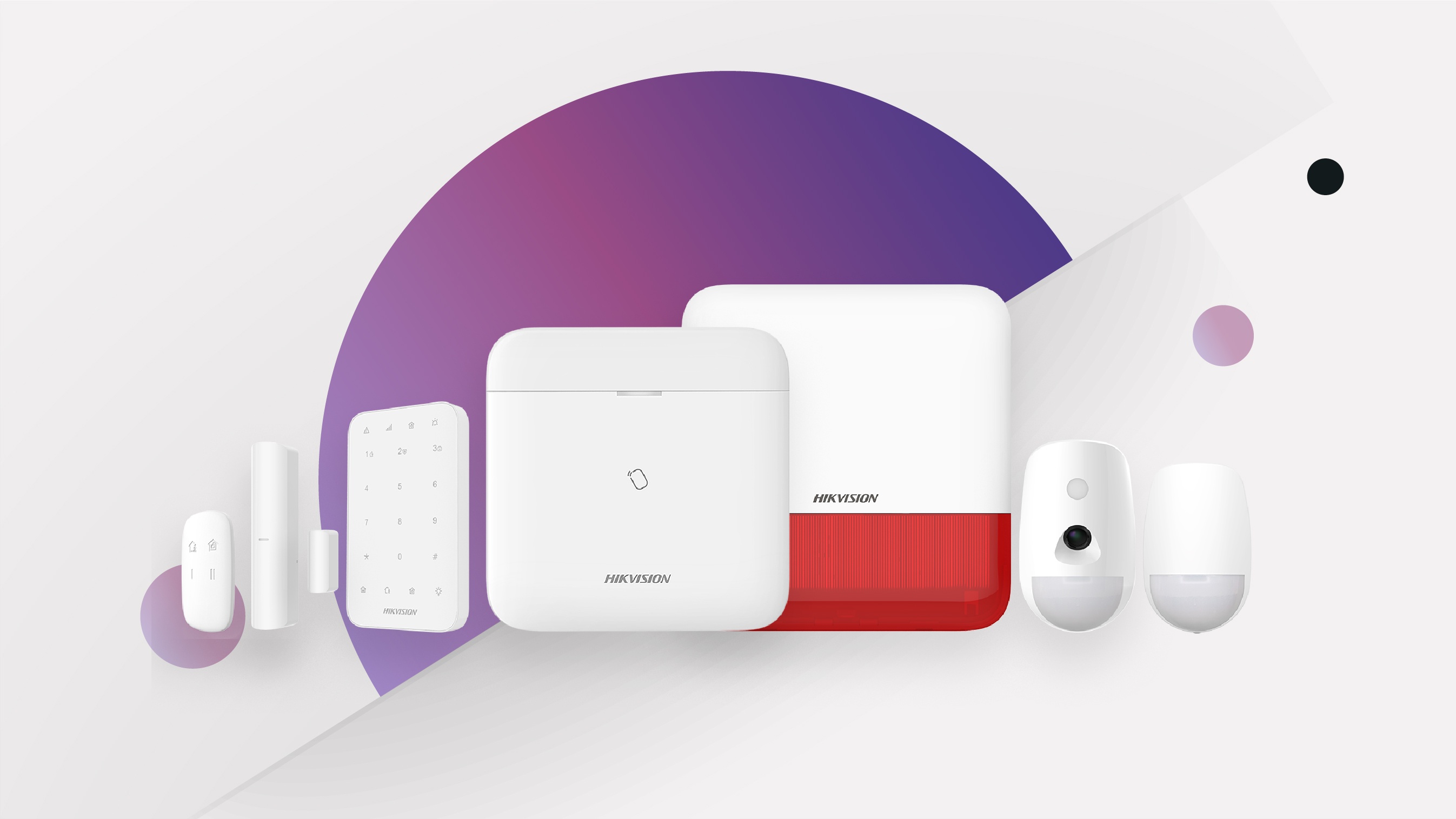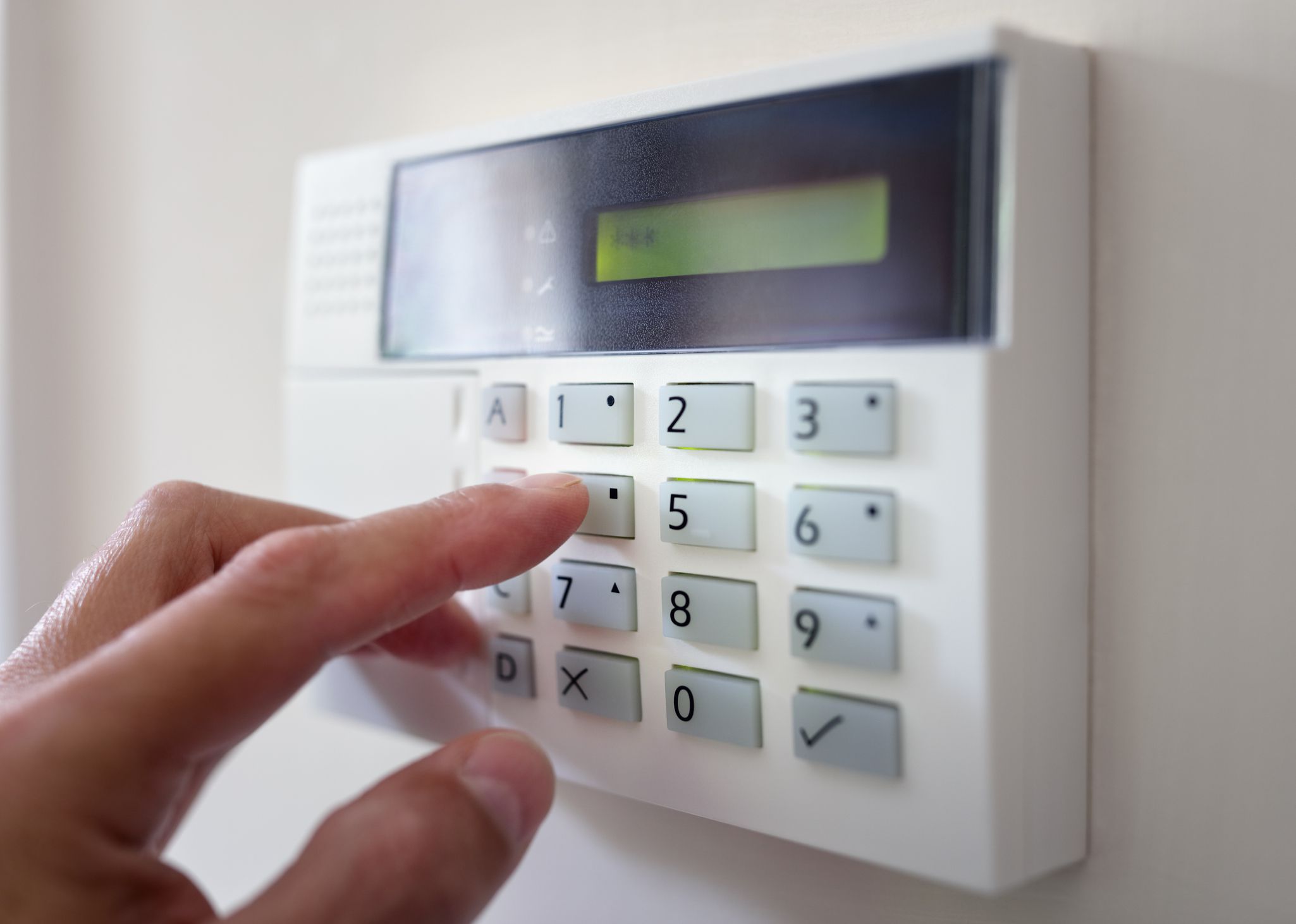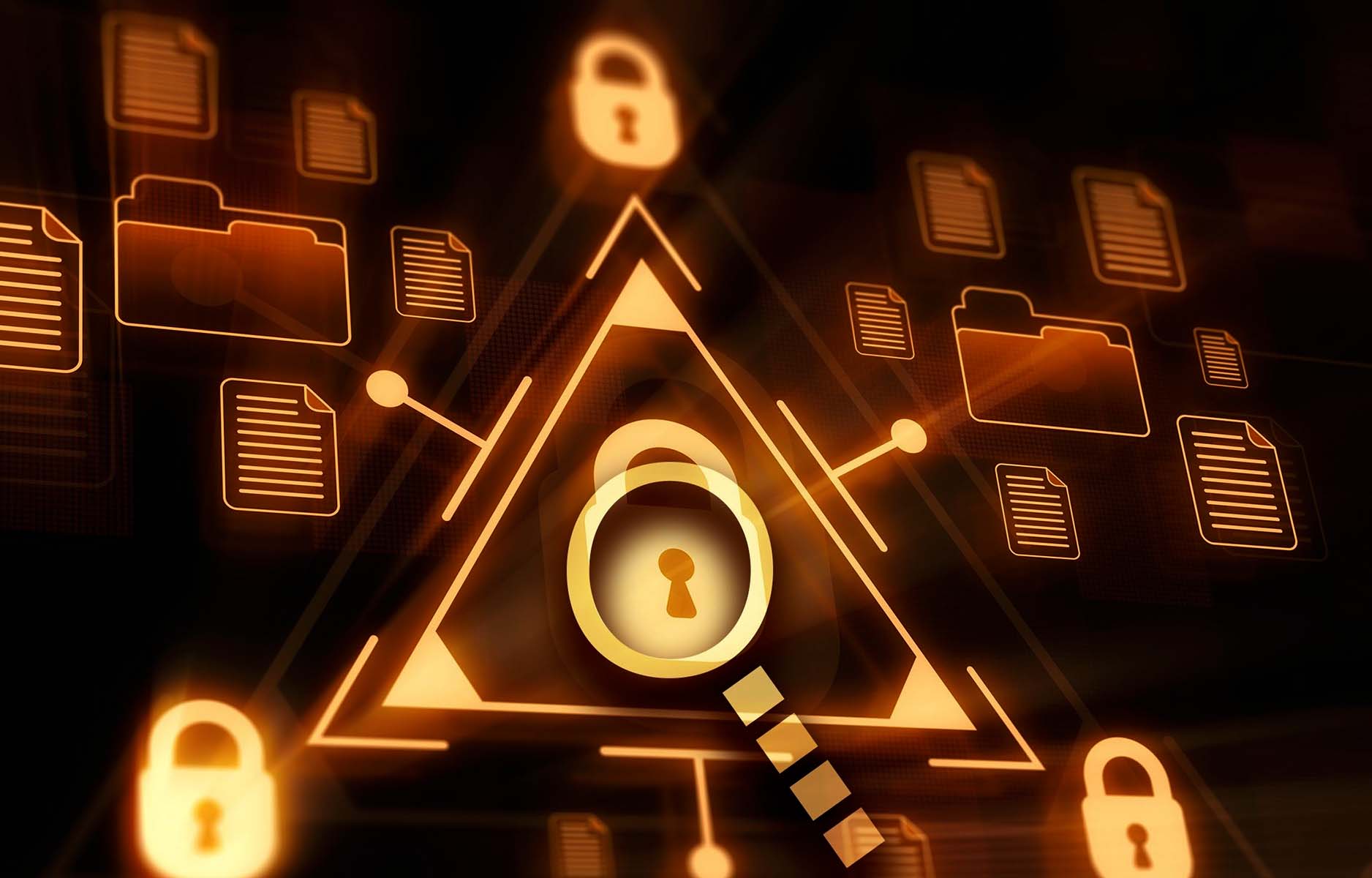Home>Home Security and Surveillance>What Is An Audit And Intrusion Detection


Home Security and Surveillance
What Is An Audit And Intrusion Detection
Modified: March 6, 2024
Learn about audit and intrusion detection for home security and surveillance. Stay protected with the latest technologies and best practices.
(Many of the links in this article redirect to a specific reviewed product. Your purchase of these products through affiliate links helps to generate commission for Storables.com, at no extra cost. Learn more)
Introduction
Welcome to the world of home security and surveillance! In an era where crime rates are on the rise, ensuring the safety of our homes and loved ones has become a top priority for many. With advanced technology and innovative solutions, the field of home security and surveillance has evolved to provide robust protection.
One critical aspect of any effective home security system is the incorporation of audits and intrusion detection. These two components work hand in hand to identify vulnerabilities, detect unauthorized access, and safeguard our homes from potential threats.
In this article, we will delve deeper into the concepts of audit and intrusion detection, their purposes, types, components, and their significance in the realm of home security and surveillance. So, let’s begin our journey into the fascinating world of audits and intrusion detection!
Key Takeaways:
- Audits help identify weaknesses in home security, like doors and surveillance cameras, and provide recommendations for improvements. They ensure compliance, assess risks, and create peace of mind for homeowners.
- Intrusion detection systems monitor network traffic in real-time, detecting potential security breaches and providing immediate alerts. They protect against unauthorized access, malware, and enhance incident response.
Read more: What Is Wireless Intrusion Detection
Definition of Audit
An audit, in the context of home security and surveillance, refers to a systematic examination and evaluation of the security infrastructure and practices in place to identify vulnerabilities, assess risks, and ensure compliance with security standards. It involves a thorough inspection of all the components that contribute to the overall security of a home, including physical barriers, access control systems, alarm systems, and surveillance cameras.
The primary goal of an audit is to identify any weaknesses or gaps in the security system and provide recommendations for improvement. Audits can be conducted by professional security consultants, law enforcement agencies, or even homeowners themselves, utilizing specialized tools and techniques to assess the effectiveness and reliability of the security measures in place.
An audit entails a comprehensive analysis of various security aspects, such as the placement and functionality of security devices, the strength of physical barriers like doors and windows, the adequacy of lighting systems, and the implementation of security protocols and procedures.
By conducting an audit, homeowners and security professionals can gain valuable insights into the vulnerabilities of a home and make informed decisions to enhance its security. It acts as a proactive approach to identify potential weaknesses before they can be exploited by intruders or criminals. The findings of an audit can form the basis for implementing necessary security upgrades and improvements.
Furthermore, audits are not a one-time process. To ensure the ongoing effectiveness of the security measures, regular audits should be conducted to address any changes in the security landscape or identify new threats that may arise.
Purpose of Audit
The purpose of an audit in the realm of home security and surveillance is multifaceted. It serves several crucial objectives that contribute to the overall safety and protection of a home. Let’s explore the main purposes of conducting an audit:
- Identifying Vulnerabilities: One of the primary goals of an audit is to identify vulnerabilities and weaknesses in the security system of a home. This includes assessing potential entry points, determining the effectiveness of physical barriers, and evaluating the functionality and coverage of surveillance cameras and alarm systems. By identifying vulnerabilities, homeowners can take appropriate measures to address them and reduce the risk of unauthorized access or intrusions.
- Assessing Risks: Audits help in assessing the level of risk that a home may face regarding security threats. By evaluating the existing security measures and analyzing the surroundings, potential risks can be identified and appropriate countermeasures can be implemented. This includes considering factors such as the neighborhood’s crime rate, proximity to high-risk areas, and any specific security concerns that need to be addressed.
- Evaluating Compliance: An audit ensures that the home security measures are in compliance with industry standards and regulations. It helps homeowners determine whether their security systems meet the necessary requirements and adhere to recommended practices. This ensures that the security infrastructure is up to par and provides a level of protection that meets industry standards.
- Providing Recommendations: Another crucial purpose of an audit is to provide recommendations for improvements and enhancements to the existing security system. Based on the findings of the audit, security professionals can offer valuable guidance on necessary upgrades, additional security features, and changes to security protocols and procedures. These recommendations help homeowners take proactive steps to strengthen their home security and minimize potential risks.
- Creating Peace of Mind: Ultimately, the purpose of conducting an audit is to provide homeowners with peace of mind. Knowing that their home security has been thoroughly assessed and potential vulnerabilities have been identified and addressed instills confidence and reassurance. It allows homeowners to feel secure in the knowledge that they have taken the necessary steps to protect their home and loved ones.
In summary, the purpose of an audit in home security and surveillance is to identify vulnerabilities, assess risks, ensure compliance, provide recommendations, and create a sense of peace of mind for homeowners. By conducting audits regularly, homeowners can adapt to changing security needs and stay one step ahead of potential threats.
Types of Audit
When it comes to home security and surveillance, various types of audits can be conducted to evaluate different aspects of the security system. Let’s explore some common types of audits:
- Physical Security Audit: This type of audit focuses on assessing the physical barriers and access control measures in place. It examines the strength and integrity of doors, windows, locks, fences, and other physical security measures. The audit evaluates the effectiveness of these barriers in preventing unauthorized access and identifies any weaknesses that need to be addressed.
- Surveillance System Audit: This audit examines the functionality and coverage of surveillance cameras, recording equipment, and video management systems. It assesses the placement of cameras, their field of view, resolution, and the quality of recorded footage. The audit ensures that the surveillance system provides adequate coverage and serves its purpose in deterring and capturing potential intruders.
- Access Control Audit: An access control audit focuses on evaluating the effectiveness of access control mechanisms, such as electronic key cards, biometric systems, or PIN codes. It assesses the procedures in place for granting or revoking access to authorized individuals and identifies any vulnerabilities in the system that could be exploited. The aim is to ensure that only authorized individuals can gain entry to specific areas of the home.
- Cybersecurity Audit: With the rise of smart home technology and interconnected devices, a cybersecurity audit is necessary to assess the security of the digital systems connected to the home security network. It examines the vulnerability of devices such as security cameras, smart locks, and alarm systems to cyber threats. This audit focuses on identifying potential weaknesses in the network and implementing measures to protect against hacking and unauthorized access.
- Policy and Procedure Audit: This type of audit evaluates the security policies and procedures in place within a home. It assesses the effectiveness and adherence to security protocols, such as emergency response plans, key management procedures, visitor entry procedures, and guidelines for handling security incidents. The audit ensures that proper measures are in place to respond to security threats and that residents are aware of and follow these protocols.
These are just a few examples of the types of audits that can be conducted to evaluate different aspects of home security and surveillance. Each type of audit addresses specific aspects of the security system and provides valuable insights for improving overall security effectiveness.
Components of an Audit
An audit consists of several key components that are essential for a comprehensive evaluation of the security system in a home. Let’s explore the main components of an audit:
- Physical Assessment: This component involves a thorough examination of the physical aspects of the home security system. It includes inspecting doors, windows, locks, fences, and other physical barriers to assess their strength, durability, and effectiveness. The physical assessment also examines the placement and functionality of security devices, such as surveillance cameras and alarm systems.
- Security Device Evaluation: This component focuses on evaluating the functionality and performance of security devices, including surveillance cameras, motion sensors, and alarm systems. The evaluation involves checking the quality of video footage, testing the reliability of alarms, and verifying the responsiveness of motion sensors. It ensures that the security devices are functioning properly and providing the intended level of protection.
- Access Control Evaluation: Access control evaluation focuses on assessing the mechanisms in place to control entry into the home. It includes testing the effectiveness of keyless entry systems, biometric scanners, PIN code access, or any other access control measures implemented. The evaluation also examines the procedures for granting or revoking access to authorized individuals and ensures that only authorized individuals can gain entry to specific areas.
- Security Policy and Procedure Review: This component involves analyzing the security policies, procedures, and protocols in place within the home. It includes reviewing emergency response plans, key management procedures, visitor entry procedures, and guidelines for handling security incidents. The review ensures that proper policies and procedures are in place and being followed to ensure the security of the home.
- Risk Assessment: The risk assessment component involves evaluating the potential risks and vulnerabilities that a home may face. It considers factors like the neighborhood’s crime rate, proximity to high-risk areas, and any specific security concerns that need to be addressed. The assessment helps identify the level of risk and guides the implementation of appropriate security measures.
- Compliance Check: This component ensures that the home security system complies with industry standards and regulations. It involves reviewing relevant security guidelines and requirements, such as local building codes and regulations. The compliance check ensures that the security system meets the necessary standards for providing effective protection.
These components work together to provide a comprehensive evaluation of the home security system. By assessing the physical aspects, evaluating security devices, examining access control measures, reviewing policies and procedures, conducting risk assessments, and ensuring compliance, an audit can identify vulnerabilities and provide recommendations for enhancing security.
Read more: What Is Intrusion Detection System
Importance of Audit
An audit plays a vital role in ensuring the effectiveness and reliability of a home security and surveillance system. Let’s explore the key reasons why audits are important:
- Identifying Vulnerabilities: One of the primary reasons for conducting audits is to identify vulnerabilities in the security system. Audits help homeowners and security professionals identify weak points in physical barriers, surveillance systems, access control measures, and security protocols. By identifying vulnerabilities, necessary steps can be taken to address them and strengthen the overall security of the home.
- Enhancing Security: Audits provide valuable insights that can help enhance the security measures in a home. By evaluating the existing security system, audits can identify areas where improvements can be made, such as upgrading physical barriers, optimizing camera placement, or implementing stronger access control measures. Enhanced security measures can act as a deterrent to potential intruders and improve the overall security of the home.
- Adapting to Changing Threats: The field of home security is constantly evolving, and new threats and vulnerabilities can emerge over time. Conducting regular audits allows homeowners to adapt to these changing threats. By staying proactive and conducting audits periodically, homeowners can identify and address new risks, implement the latest security technologies, and ensure that their security system remains up to date in the face of evolving threats.
- Compliance with Standards: Audits ensure compliance with industry standards and regulations. Homes that undergo regular audits can ensure that their security measures meet the necessary requirements and adhere to recommended practices. Compliance with standards not only helps protect the home, but it may also be necessary for insurance purposes or when selling the property.
- Peace of Mind: Knowing that an audit has been conducted and potential vulnerabilities have been addressed provides homeowners with peace of mind. They can rest assured that they have taken all necessary steps to protect their home and loved ones. This peace of mind allows homeowners to feel more secure within their own living environment.
- Cost Savings: While audits may require an investment of time and resources, they can result in long-term cost savings. By identifying vulnerabilities early on, homeowners can address them before they lead to security breaches or expensive damages. Timely detection and resolution of security issues can help prevent potential losses and reduce the need for costly repairs or replacements.
In summary, audits are important in home security and surveillance as they help identify vulnerabilities, enhance security measures, adapt to changing threats, ensure compliance, provide peace of mind, and can result in cost savings. By conducting regular audits, homeowners can take proactive steps to protect their homes and provide a safe environment for themselves and their families.
Definition of Intrusion Detection
Intrusion detection, in the context of home security and surveillance, refers to the process of identifying unauthorized or suspicious activities within a network or system and taking appropriate action to mitigate potential threats. It involves the use of specialized software, hardware, and algorithms to monitor and analyze network traffic, system logs, and other security-related data to detect and respond to potential security breaches.
Intrusion detection systems (IDS) are designed to detect various types of malicious activities, including unauthorized access attempts, network scanning, malware infections, and suspicious behavior within the network. By continuously monitoring and analyzing network traffic patterns and system events, intrusion detection systems can provide real-time alerts or generate reports when potential threats are detected.
There are two main types of intrusion detection systems:
- Network-based Intrusion Detection System (NIDS): NIDS monitors network traffic flowing through routers, switches, and other network devices. It analyzes network packets, protocols, and traffic patterns to identify any suspicious activities or known attack signatures. NIDS can detect and alert on various network-based attacks, such as port scanning, denial-of-service (DoS) attacks, and unauthorized access attempts.
- Host-based Intrusion Detection System (HIDS): HIDS operates on individual host systems, such as servers or workstations, and monitors system logs and file integrity. It analyzes system events, changes in file attributes, and user activities to detect any signs of unauthorized or suspicious activities. HIDS can detect activities such as unusual login attempts, unauthorized access to sensitive files, and modifications to critical system files.
Modern intrusion detection systems often combine both NIDS and HIDS capabilities to provide comprehensive coverage and maximize detection capabilities.
An essential feature of intrusion detection systems is their ability to differentiate between legitimate and malicious activities. IDS use various techniques, including signature-based detection and anomaly-based detection. Signature-based detection compares network traffic or system events against a database of known attack patterns, enabling the system to identify and alert on known threats. Anomaly-based detection, on the other hand, establishes a baseline of normal behavior and flags activities that deviate significantly from the established patterns.
Intrusion detection systems play a crucial role in providing early detection and response to potential security breaches. By monitoring network and system activities, IDS can help minimize the impact of attacks, prevent unauthorized access, and protect the integrity and confidentiality of information within a home network.
Tip: Regularly review your system logs and network traffic to detect any unauthorized access or suspicious activity. Implementing intrusion detection systems can help identify potential security breaches.
Purpose of Intrusion Detection
The purpose of intrusion detection in the realm of home security and surveillance is to provide early detection, alerting, and response to potential security breaches. Intrusion detection systems play a crucial role in enhancing the overall security of a home network. Let’s explore the main purposes of intrusion detection:
- Early Threat Detection: The primary purpose of intrusion detection is to identify unauthorized or suspicious activities as early as possible. By monitoring network traffic, system logs, and user behaviors, intrusion detection systems can detect signs of potential security breaches or malicious activities. Early detection allows for prompt action to be taken before an attack can cause significant damage or compromise the security of the home network.
- Real-time Alerting: Intrusion detection systems provide real-time alerts when potential threats are detected. These alerts notify homeowners or security personnel about suspicious activities, enabling them to take immediate action to investigate and mitigate the threat. Real-time alerting ensures that potential security breaches are addressed promptly, minimizing the potential impact on the home network.
- Prevention of Unauthorized Access: Intrusion detection helps prevent unauthorized access to the home network by identifying and blocking suspicious activities. Intrusion detection systems can detect and respond to various types of network-based attacks, such as port scanning or attempts to exploit vulnerabilities in network devices or connected systems. By actively monitoring network traffic, intrusion detection systems can enforce access control policies and prevent unauthorized individuals or malicious entities from gaining access to the home network.
- Protection from Malware: Intrusion detection systems are capable of detecting and mitigating malware infections within the home network. By analyzing network traffic and system behavior, intrusion detection systems can identify known malware signatures or detect abnormal behavior that indicates the presence of malware. Prompt detection and response to malware infections help prevent the spread of malware within the network and protect sensitive data from being compromised.
- Enhancing Incident Response: Intrusion detection systems play a crucial role in incident response planning. By providing detailed information about security incidents, such as the nature of the attack, the affected systems, and the potential impact, intrusion detection systems assist in the investigation and mitigation of security breaches. This information enables homeowners or security personnel to take appropriate measures to mitigate the attack, prevent further damage, and improve the overall security posture of the home network.
In summary, the purpose of intrusion detection in home security and surveillance is to provide early threat detection, real-time alerting, prevention of unauthorized access, protection from malware, and enhanced incident response. By proactively monitoring network traffic and system activities, intrusion detection systems help ensure the security and integrity of the home network and protect sensitive information from potential threats and unauthorized access.
Types of Intrusion Detection
Intrusion detection systems come in various types, each with its own focus and capabilities. Let’s explore some common types of intrusion detection methods used in home security and surveillance:
- Network-Based Intrusion Detection System (NIDS): NIDS focuses on monitoring network traffic to detect potential security breaches. It analyzes network packets, protocols, and traffic patterns to identify suspicious or malicious activities. NIDS can detect various types of network-based attacks, such as port scanning, denial-of-service (DoS) attacks, and unauthorized access attempts. By inspecting network traffic at specific points within the network, NIDS can provide real-time alerts or generate reports when potential threats are detected.
- Host-Based Intrusion Detection System (HIDS): HIDS operates at the individual host level and monitors system logs and file integrity. It analyzes system events, changes in file attributes, and user activities to detect any signs of unauthorized or suspicious activities occurring within the host system. HIDS can detect activities such as unusual login attempts, unauthorized access to sensitive files, modifications to critical system files, or the presence of malware. By focusing on host-level activities, HIDS provides insights into the security of individual devices within the home network.
- Log-Based Intrusion Detection System: Log-based intrusion detection systems analyze system logs generated by various network devices, servers, and applications. They examine log entries for patterns or anomalies that may indicate potential security breaches. Log-based IDS can detect activities such as repeated failed login attempts, unauthorized access attempts, or suspicious system events. By correlating log entries and analyzing their significance, log-based IDS can identify security incidents and trigger alerts or generate reports for further investigation.
- Signature-Based Intrusion Detection System: Signature-based intrusion detection systems work by comparing network traffic or system events against a database of known attack signatures. These attack signatures are patterns or characteristics associated with specific known attacks. When network traffic or system events match a known attack signature, the IDS triggers an alert or takes appropriate action. Signature-based IDS can effectively detect and prevent attacks whose signatures are present in the database. However, they may struggle to detect new or unknown attacks that do not match any existing signatures.
- Anomaly-Based Intrusion Detection System: Anomaly-based intrusion detection systems establish a baseline of normal behavioral patterns for the network or host systems. They continuously monitor network traffic, system logs, or user behaviors and look for deviations from the established baseline. Any activity that significantly deviates from the norm is flagged as potentially suspicious or malicious. Anomaly-based IDS are effective in detecting new or unknown attacks, as they can identify abnormal behaviors even if there is no specific attack signature. However, they may also generate false positives if legitimate activities deviate from the established baseline.
These are some of the common types of intrusion detection methods used in home security and surveillance. Each type has its own strengths and focuses on different aspects of security monitoring. Depending on the specific needs and requirements of a home network, a combination of these intrusion detection methods may be employed to provide comprehensive coverage and maximize the detection capabilities.
Read more: What Is Chassis Intrusion Detection
Components of Intrusion Detection
Intrusion detection systems consist of various components that work together to provide effective monitoring and detection of potential security breaches. Let’s explore the main components of an intrusion detection system:
- Sensors: Sensors are the first line of defense in an intrusion detection system. They monitor different aspects of the network or host system and collect data that can indicate potential security breaches. Network sensors capture and analyze network traffic, while host sensors monitor system events, logs, and user activities. The sensors feed data into the IDS for analysis and detection of suspicious activities.
- Analysis Engine: The analysis engine is the brain of the intrusion detection system. It receives data from the sensors and analyzes it to detect potential security breaches. The analysis engine uses various techniques, such as signature-based detection or anomaly-based detection, to identify known attack signatures or abnormal behaviors. It compares the collected data against a database of known threats or establishes a baseline of normal patterns to spot deviations or anomalies that indicate potential security breaches.
- Alerting System: The alerting system notifies users or security personnel when potential security breaches are detected. It generates real-time alerts, which may include details about the detected threat, its severity, and the affected system. The alerting system ensures that prompt action can be taken to investigate and mitigate potential security incidents.
- Logging and Reporting: Logging and reporting components capture and store information about detected threats, system events, and network activities. They record relevant details, such as timestamps, source IP addresses, and the nature of the detected threat. Logging and reporting enable analysis and investigation of security incidents, help in identifying patterns or trends, and support compliance requirements.
- Response Mechanisms: Intrusion detection systems may include response mechanisms to mitigate detected threats. These mechanisms can be automated or manual, depending on the system’s configuration and the severity of the detected threat. Automated response mechanisms may include blocking suspicious IP addresses, terminating network connections, or initiating incident response procedures. Manual response mechanisms require human intervention to investigate the detected threat and decide on appropriate actions.
- Update Mechanism: To ensure the effectiveness of an intrusion detection system, regular updates are necessary. The update mechanism keeps the system’s signature databases, anomaly detection models, and other components up to date with the latest threat intelligence. This ensures that the IDS can detect and respond to new and emerging threats effectively.
These components work in synergy to provide comprehensive intrusion detection capabilities. By collecting and analyzing data, generating alerts, and facilitating incident response, intrusion detection systems help protect the home network from potential security breaches and provide peace of mind to homeowners.
Importance of Intrusion Detection
Intrusion detection plays a crucial role in safeguarding the security and integrity of a home network. It provides early detection, alerting, and response mechanisms to potential security breaches. Let’s explore the key reasons why intrusion detection is important:
- Early Threat Detection: The primary importance of intrusion detection is its ability to detect potential security breaches early on. By monitoring network traffic, system logs, and user behaviors, intrusion detection systems can identify suspicious activities or anomalies that may indicate an ongoing attack. Early threat detection allows for prompt action to be taken to investigate, mitigate, and minimize the potential damage caused by an attack.
- Real-time Alerting: Intrusion detection systems provide real-time alerts when potential threats are detected. These alerts notify homeowners or security personnel about suspicious activities, enabling them to take immediate action to investigate and respond to the threat. Real-time alerting ensures that potential security breaches can be addressed promptly, minimizing the impact on the home network.
- Protection from Unauthorized Access: Intrusion detection systems help protect the home network from unauthorized access attempts. By monitoring network traffic and analyzing access patterns, intrusion detection systems can identify and block suspicious activities. This prevents unauthorized individuals or malicious entities from gaining unauthorized access to the network and its resources.
- Detection of Malware Infections: Intrusion detection systems can detect and respond to malware infections within the home network. By analyzing network traffic, system logs, and file integrity, intrusion detection systems can identify known malware signatures or detect abnormal behavior that may indicate the presence of malware. Prompt detection and response to malware infections help prevent the spread of malware within the network and protect sensitive data from being compromised.
- Enhanced Incident Response: Intrusion detection systems contribute to a more effective incident response process. By providing detailed information about security incidents, such as the nature of the attack, the affected systems, and the potential impact, intrusion detection systems assist in the investigation and mitigation of security breaches. This enables homeowners or security personnel to take appropriate measures to mitigate the attack, prevent further damage, and improve the overall security posture of the home network.
- Continuous Monitoring and Adaptability: Intrusion detection systems provide continuous monitoring of network traffic and system activities. They can adapt to changing threats by receiving updates that incorporate the latest threat intelligence. Through continuous monitoring and adaptability, intrusion detection systems can identify and respond to new and emerging threats, helping to ensure the ongoing security of the home network.
In summary, intrusion detection is important because it provides early threat detection, real-time alerting, protection from unauthorized access, detection of malware infections, enhanced incident response, and continuous monitoring. By deploying intrusion detection systems, homeowners can proactively protect their home networks from potential security breaches and ensure the ongoing security and integrity of their digital assets.
Comparison of Audit and Intrusion Detection
Audit and intrusion detection are two critical components of a comprehensive home security and surveillance system. While they serve different purposes, they work together to enhance the overall security posture of a home network. Let’s compare the key aspects of audit and intrusion detection:
- Purpose: The purpose of an audit is to evaluate the security infrastructure, identify vulnerabilities, and provide recommendations for improvement. It focuses on assessing the effectiveness and compliance of security measures within a home. On the other hand, the purpose of intrusion detection is to monitor network traffic and system activities in real-time, detect potential security breaches, and alert homeowners or security personnel about suspicious activities.
- Scope: Audits have a broader scope compared to intrusion detection. Audits encompass a comprehensive assessment of all security components, including physical barriers, access control systems, alarm systems, and surveillance cameras. They evaluate the overall security posture of a home. In contrast, intrusion detection systems focus on monitoring network traffic, system logs, and user behaviors to detect unauthorized access attempts, malware infections, or other suspicious activities.
- Timing: Audits are typically conducted periodically or on a scheduled basis. They are proactive in nature and help ensure that security measures remain effective over time. Intrusion detection, however, operates in real-time. It continuously monitors network traffic and system activities and provides immediate alerts or responses when potential security breaches are detected.
- Methodology: Audits involve examining physical barriers, conducting vulnerability assessments, reviewing security policies and procedures, and analyzing the placement and functionality of security devices. They may also include interviews with homeowners and security personnel. Intrusion detection relies on specialized software, sensors, and algorithms to monitor network traffic, analyze system logs, and detect potential security breaches based on predetermined patterns or anomalies.
- Focus: Audits focus on identifying vulnerabilities, assessing risks, ensuring compliance, and providing recommendations for security improvements. They are more concerned with the overall security infrastructure and its alignment with industry standards. Intrusion detection focuses on real-time threat detection, alerting, and response to potential security breaches. It is primarily concerned with the immediate identification and mitigation of suspicious activities within the home network.
- Outcome: The outcome of an audit is a detailed assessment report that identifies vulnerabilities, highlights areas of improvement, and provides recommendations for enhancing the security of a home. This report serves as a guide for implementing necessary security upgrades. Intrusion detection, on the other hand, generates real-time alerts when potential security breaches are detected, enabling homeowners or security personnel to take immediate action to investigate and respond to the threats.
In summary, audits and intrusion detection systems serve complementary roles in home security and surveillance. Audits provide a comprehensive evaluation of the security infrastructure and offer recommendations for improvement, while intrusion detection focuses on real-time monitoring, detection, and response to potential security breaches within the home network. By combining the insights gained from audits with the vigilant monitoring of intrusion detection systems, homeowners can establish a robust and proactive security ecosystem that safeguards their home and loved ones.
Conclusion
In the ever-evolving world of home security and surveillance, audits and intrusion detection play critical roles in ensuring the safety and protection of our homes and loved ones. Audits provide a comprehensive evaluation of the security infrastructure, identifying vulnerabilities and offering recommendations for improvement. Meanwhile, intrusion detection systems monitor network traffic and system activities, detecting potential security breaches and providing real-time alerts or responses. These two components work hand in hand to strengthen the overall security posture of a home network.
Audits are proactive evaluations that help identify weaknesses in physical barriers, access control systems, alarm systems, and surveillance cameras. By conducting audits regularly, homeowners can stay ahead of potential threats and implement necessary security upgrades and improvements. Audits serve the purpose of ensuring compliance with industry standards, assessing risks, and providing peace of mind by creating a safe living environment.
Intrusion detection systems operate in real-time, continuously monitoring network traffic, system logs, and user behaviors. They are essential for early threat detection, alerting homeowners or security personnel to potential security breaches as they happen. Intrusion detection detects unauthorized access attempts, malware infections, and other suspicious activities, enabling immediate action to investigate and mitigate threats. Intrusion detection provides a layer of defense that complements the findings of audits and enhances the overall security of the home network.
When combined, audits and intrusion detection offer a robust security ecosystem for homes. Audits identify vulnerabilities and recommend security improvements, while intrusion detection provides continuous monitoring and real-time response to potential security breaches. By conducting audits periodically and deploying effective intrusion detection systems, homeowners can proactively safeguard their homes, minimize risks, and ensure the ongoing security and integrity of their digital assets.
In conclusion, home security and surveillance are fundamental aspects of our lives in today’s world. By leveraging audits and intrusion detection, we can create a safe and secure environment within our homes, providing peace of mind and protecting our loved ones from potential threats. Stay vigilant, stay proactive, and invest in robust security measures to create a place that truly feels like a sanctuary.
Frequently Asked Questions about What Is An Audit And Intrusion Detection
Was this page helpful?
At Storables.com, we guarantee accurate and reliable information. Our content, validated by Expert Board Contributors, is crafted following stringent Editorial Policies. We're committed to providing you with well-researched, expert-backed insights for all your informational needs.













